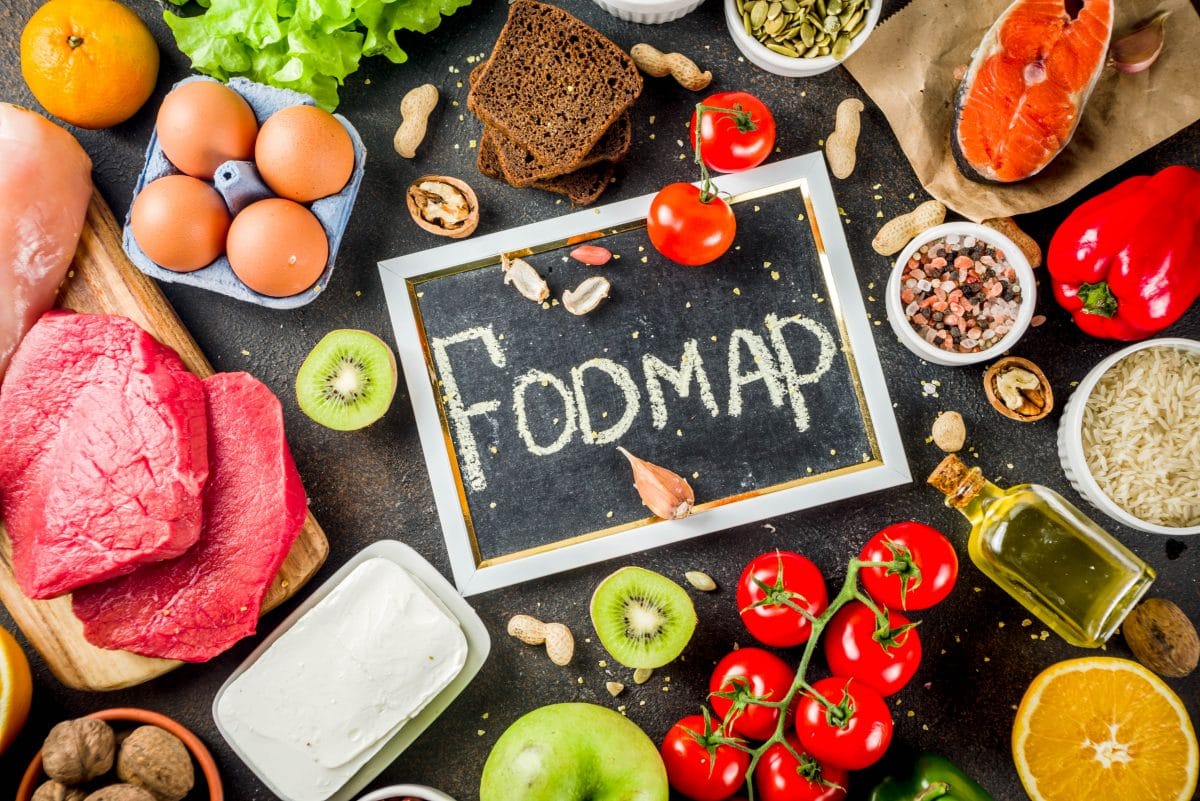The Low FODMAP Diet
- Low FODMAP diet
The low FODMAP diet is a 3 part process which reduces irritable bowel syndrome symptoms and identifies trigger foods.
In this article I will explain what the diet entails, which foods are high in FODMAPs and how to follow the diet.

Jump to;
Things To Know Before Starting the low FODMAP Diet
Although this diet has been proven to help reduce IBS symptoms, it is complicated.
Please ensure you follow medical guidelines and work with a dietitian to prevent nutritional deficiencies and to do this diet correctly.
It is also important that you have an accurate IBS diagnosis. Failure to have this prior to starting the diet could lead to serious consequences including bowel cancer, osteoporosis and malnutrition. You can read more about getting an IBS diagnosis here.
What Are FODMAPs?
FODMAPs are fermentable carbohydrates, the acronym stands for;
Fermentable
Oligosaccharides
Disaccharides
Monosaccharides
Polyols
How Do FODMAPs Cause IBS Symptoms?
When you eat FODMAPs, they travel to the large bowel (at the end of your gut) where they broken down by gut bacteria. This process is called fermentation, which produces gas, causing bloating, wind and stomach pain.

Because the FODMAPs have not been broken down in the small bowel by the time they research your large bowel, they also draw in water in a process known as osmosis. This can cause loose stools.
The 3 Stage Process
Stage 1: The Restriction Phase
The first stage involves a 2-6 week restriction of FODMAP intake. The time you are on it depends on your symptoms.
Stage 2: The Reintroduction Phase
This is the stage where you find out which single FODMAPs you can manage and in what quantity.
Each FODMAP is reintroduced using a food that contain that 1 FODMAP only. You slowly increase the portion size over 3 days and stop if you experience symptoms.
Stage 3: The Modified Stage
This is the stage where you find out about FODMAP combinations AKA normal life eating.
I have written a more extensive post on this here.
Which Foods Can I Eat on The Low FODMAP Diet?
The below provides a very broad idea of what you need to avoid or have on the low FODMAP diet.
For specific measurements please check the Monash app. Monash University own an official testing centre for FODMAP foods and this is the best, up to date resource you can find.
I have also created these low FODMAP recipes you may enjoy;
Low FODMAP Food List
- Vegetables: carrots, spinach, olives, potatoes, spring onion (green top only), aubergine, courgette, tomatoes, cucumber.
- Fruits: grapes, orange, kiwi and clementines.
- Carbohydrates: quinoa, rice, sourdough bread (traditionally made), wheat free pasta / rice.
- Protein: all plain meat and fish, plain tempeh, seitan, firm tofu and lactose free milk.
- Fats: all plain oils, butter, ghee, lard, garlic infused oil.
High FODMAP Food List
- Vegetables: garlic, onion, asparagus, leeks.
- Fruits: orange juice, plums, apples.
- Carbohydrates: wheat bread, pasta
- Protein: beans, pulses, silken tofu, soy milk, cow’s milk and flavoured meats.
- Fats: oil containing garlic pieces.
Bottom Line
The low FODMAP diet is scientifically proven to help IBS symptoms and pin-point trigger foods. The diet works by first reducing then reintroducing to find out which foods are causing your symptoms.
This process is complicated and you should always work with a dietitian.
Low FODMAP Trained Dietitian
Kirsten Jackson is a registered dietitian specialising in IBS. She has done additional training at Kings College London University in the low FODMAP Diet.